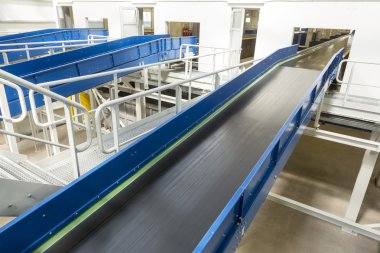As outlined by Industrial.ph in their article “What is a Conveyor System?”, conveyor systems are essential for efficiently transporting goods and materials in industries such as manufacturing, agriculture, food processing, and construction. These systems enhance productivity by ensuring smooth and consistent movement of materials, reducing manual labor, and optimizing workflow. Depending on the application, different types of conveyor systems are used to meet specific operational needs.
Types of Conveyor Systems
- Belt Conveyors – The most common type, these consist of a continuous loop of material (usually rubber or PVC) supported by rollers. A motor powers the belt, moving goods efficiently. They are widely used in food processing, distribution, and general manufacturing.
- Roller Conveyors – Instead of a continuous belt, these systems use rotating metal rollers to transport goods. Ideal for heavy loads such as pallets and crates, roller conveyors are frequently found in warehouses and distribution centers.
- Chain Conveyors – These use metal chains instead of rollers and are perfect for moving heavy machinery, vehicles, and precision parts in manufacturing. Their durability and precision make them indispensable in automotive and heavy equipment industries.
- Overhead Conveyors – Suspended from the ceiling, these systems transport goods above the workspace, optimizing floor space. They are widely used in assembly lines and production plants for handling materials efficiently.
Each conveyor type offers unique benefits, from increasing speed and accuracy to reducing labor costs. By selecting the right system, businesses can enhance efficiency, reduce downtime, and improve overall operational performance.
Click here to learn more about May Conveyor’s belting solutions.
Article with all rights reserved, courtesy of Industrial.ph.








